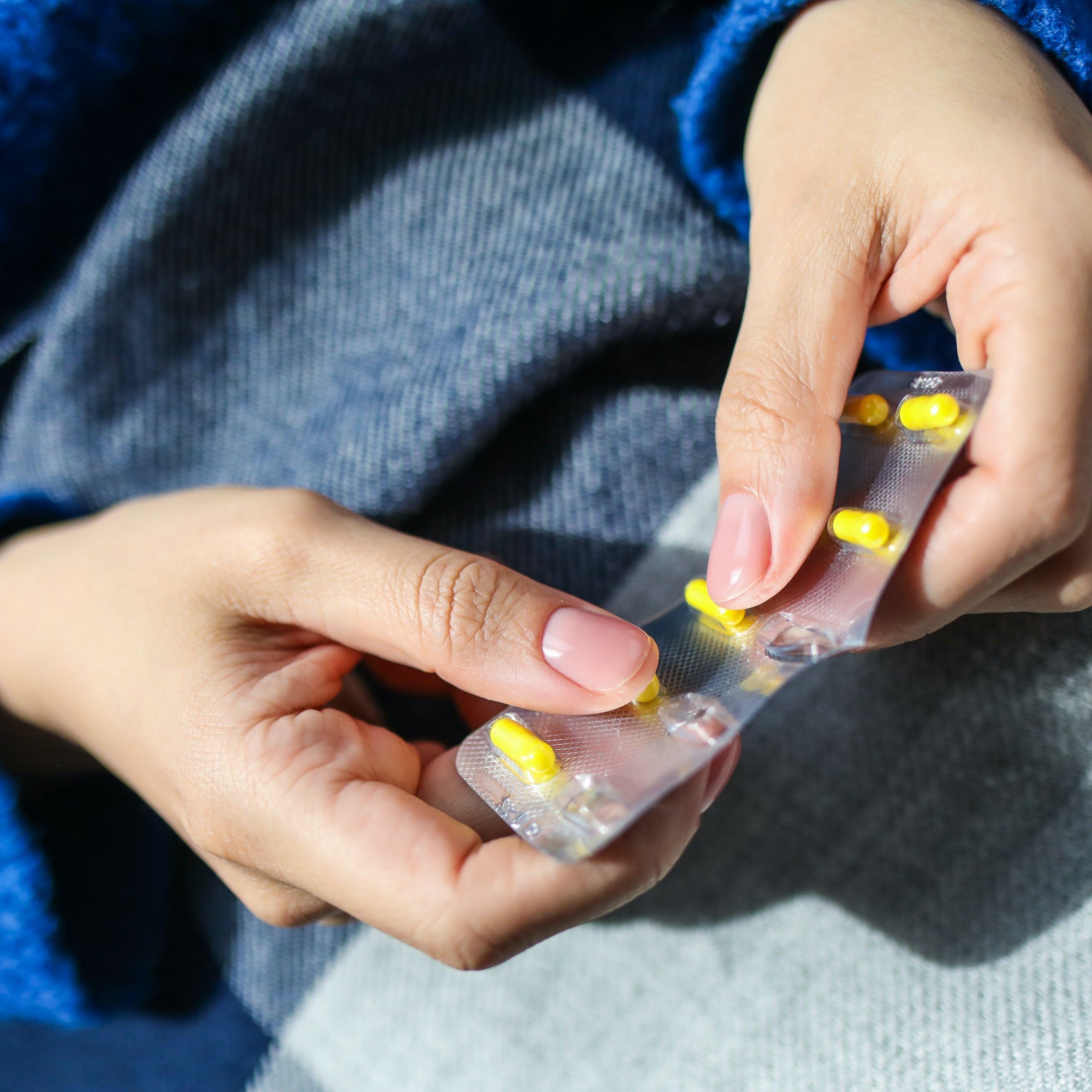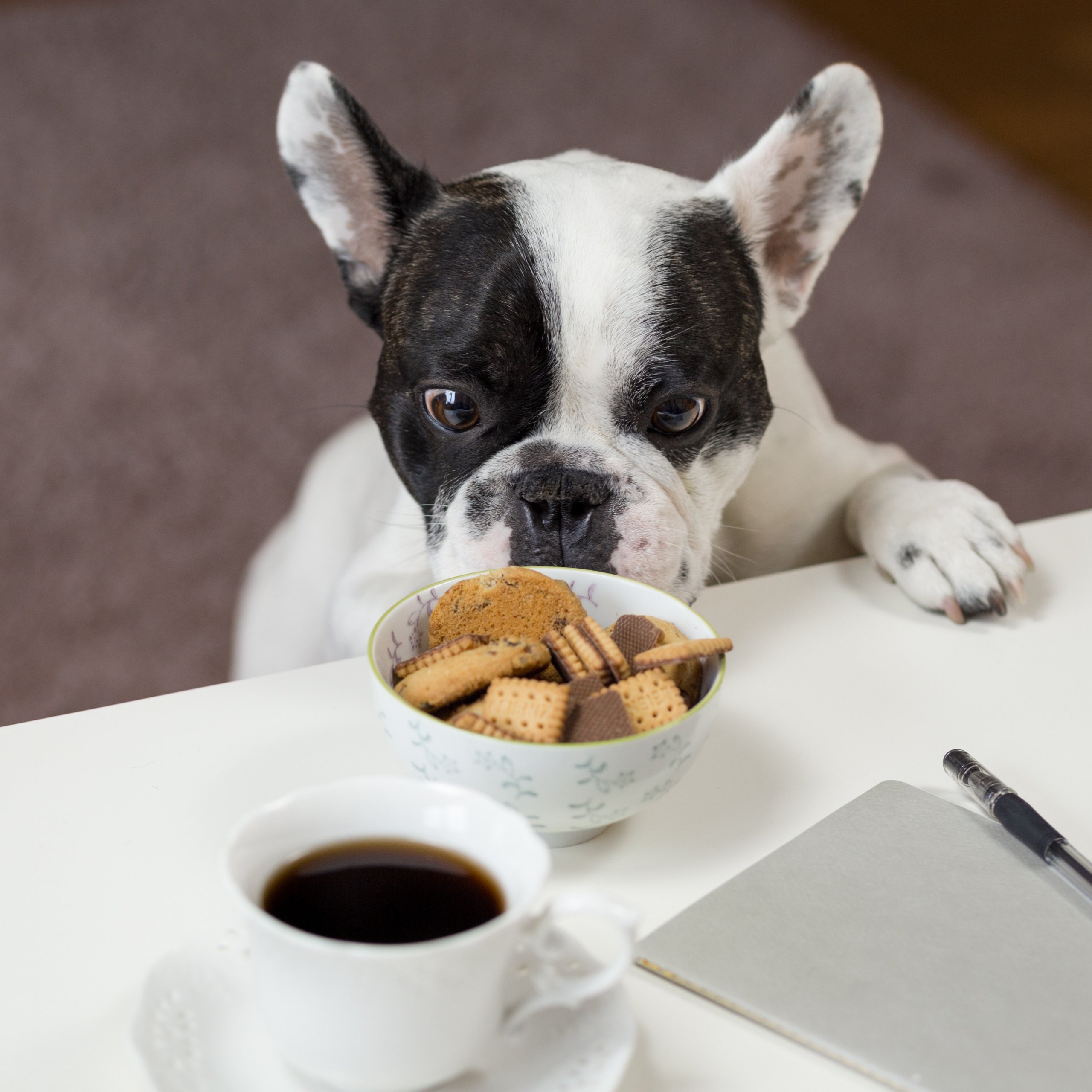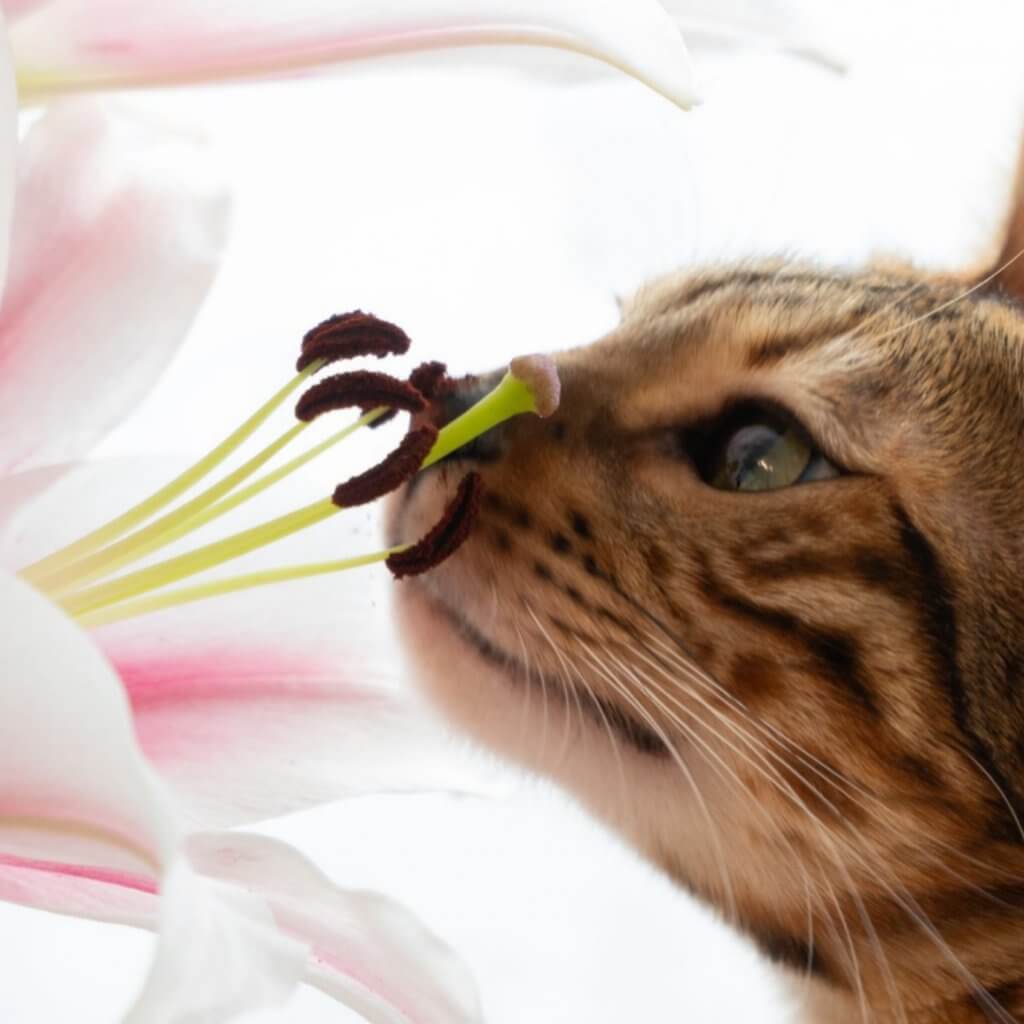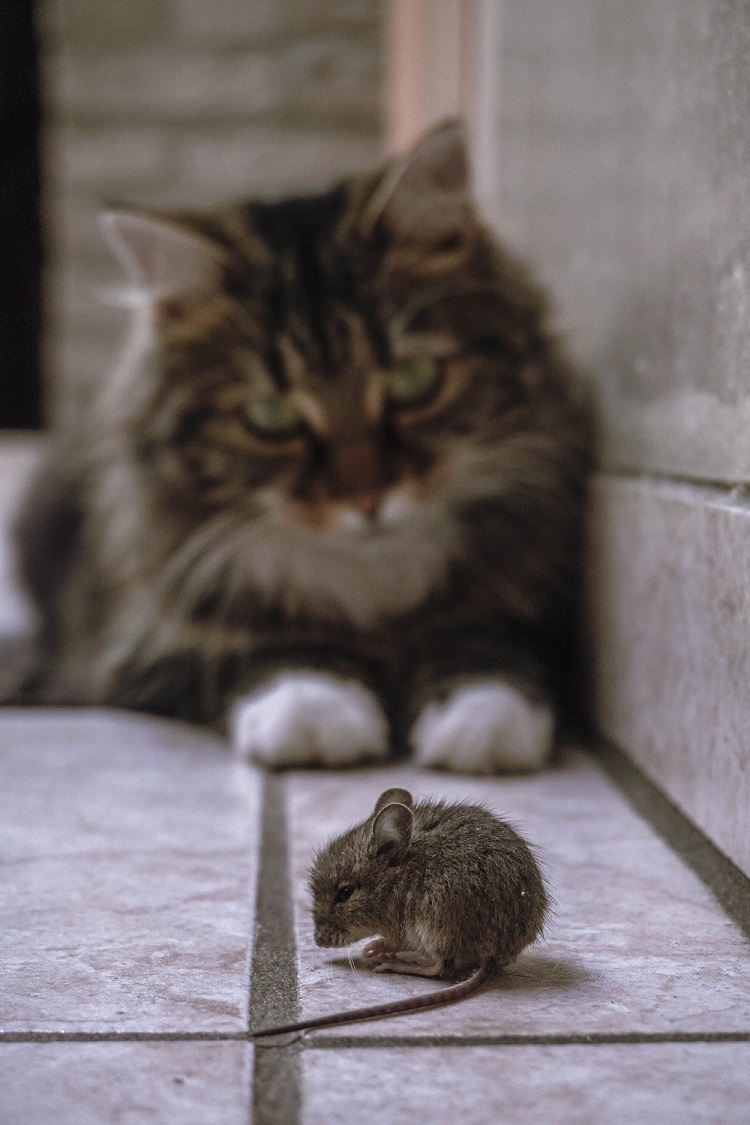Pet Poison Prevention
Published March 8, 2022


Content Reviewed by an Essentials PetCare Veterinarian
During Pet Poison Prevention Month, we want to help you protect your pet from toxic items they may find around the house and yard. Here is the rundown on common poisons your pet could encounter, how to prevent poisoning, and what to do in the event of an emergency.
Medications


- NSAID’s (ibuprofen, naproxen) & Acetaminophen (Tylenol) – These medications can actually be fatal to your pet. If you suspect your pet is in pain, never treat with human medication. Contact a veterinarian to determine appropriate treatment for relief. Symptoms of poisoning may include GI upset, stomach ulcers, and kidney failure.
- Vitamins & Supplements – While your pet’s food includes the appropriate amounts of vitamins and minerals, supplements made for people tend to come in much higher doses than your pet can tolerate. Effects will depend upon the supplement, but common symptoms of poisoning may include lethargy, vomiting, diarrhea, decreased appetite, and stomach pain. Severe effects may include seizures, abnormal heart rate, intestinal bleeding, kidney or liver failure, respiratory distress, and in the case of vitamin D poisoning, mineralization of organs. Some supplements may also include xylitol, which is a dangerous sweetener that is included in some chewable supplements.
- Prescription Medications – Whether they are for humans or pets, certain medications must be prescribed, as they could be harmful without a doctor’s supervision. Prescribed medications should never be used by anyone other than the patient they were prescribed for. This also applies to veterinary medications, even if you have multiple pets taking the same medication. They may be in different weight categories, meaning that both under-doses and overdoses could be dangerous.
Safety Tips:
- The ASPCA reported that over-the-counter medications cause the most incidents of pet poisoning, so it’s important to prevent all access to them. Remember that child-proof does not necessarily mean pet-proof, as pets may be able to chew through child-proof containers. Medication should be stored out of your pet’s reach, especially if it is a tempting, flavored veterinary product or chewable supplement.
- If your pet tends to dive for anything that falls from the table, put them in another room anytime you need to take medication.
- If you have multiple pets in your home, make sure it is clear which medication is for each pet, and keep a schedule so they always receive their medications on time. Like the note above, it may be a good idea to provide your pets their medication in separate rooms, to prevent one pet from taking another’s medication.
- Follow your veterinarian’s recommendations and instructions for any over the counter or prescription products. Do not try any medication or home remedy without discussing with your veterinarian first.
Toxic Foods


- Caffeine – Caffeinated beverages, including coffee, teas, and soda, are toxic to pets. After ingesting caffeine, pets may experience restlessness, hyperactivity, trembling, abnormal heart rhythms and increased heartrate, increased body temperature, and seizures.
- Chocolate – A mixture of cocoa beans and cocoa butter, chocolate contains theobromine and caffeine, which cause stimulation and increased heartrate, and it could be deadly to pets. Generally, the more bitter the chocolate is, the more toxic it can be.
- Grapes & Raisins – Some types of grapes and raisins have been shown to cause kidney failure in dogs when consumed in large amounts. The basis of this kidney failure is unclear, but it is currently being studied in the veterinary community. The exact amount that would be dangerous is unknown, so any amount could potentially be dangerous.
- Macadamia Nuts – According to a study, clinical signs commonly reported in dogs ingesting macadamia nuts include circling, lethargy, shaking and weakness. These signs have only been seen in dogs, and the exact cause for their sensitivity is unknown.
- Moldy Foods – Moldy foods may contain certain tremorgenic mycotoxins which could cause muscle tremors and convulsions that can last for several days.
- Onions, Garlic, Cloves, & More – raw or cooked, all members of the genus Allium are dangerous to cats and dogs. Members of this genus include onions, chives, garlic, leeks, and shallots. They cause damage to the red blood cells and can lead to anemia.
- Xylitol Sweeteners – Xylitol is a sweetener that is often added to candy or gum and even peanut butter. Pets can develop dangerously low blood glucose levels and liver failure from ingesting xylitol. Even a very small amount can be deadly.
- Sugar – Sugar can lead to upset stomach. In the long run, it will contribute to cavities and even diabetes.
Safety Tips:
- Keep food and beverages out of your pet’s reach.
- Keep all baking materials in pet-proofed storage.
- Avoid feeding table scraps.
- If your pet takes medication with peanut butter, always read the label for toxic ingredients, like sweeteners.
Plants & Gardening Supplies


- Lilies – Easter lilies (Lilium longiflorum), tiger lilies (Lilium tigrinum), rubrum or Japanese showy lilies (Lilium speciosum and Lilium lancifolium), and various day lilies (Hemerocallis species) are extremely dangerous to cats. While the exact toxic component is unknown, cats appear to be the only species sensitive to its deadly effects. A cat licking or chewing on the plant may develop potentially fatal kidney failure. Even small ingestions, such as a few bites on a leaf or ingestion of pollen, can be deadly.
- Rhododendron – These species contain a toxic substance known as Grayanotoxin. Grayanotoxins can be very dangerous if pets ingest plants containing them. This type of poison causes GI upset and can also affect heart rate and the nervous system. As few as two leaves may cause serious poisonings. A common plant found in this family is the Azalea, which is often used as an ornamental plant.
- Cardiac Glycoside-Containing Plants – These types of plants contain a poison known as cardiac glycosides. The most commonly recognized is digitalis, which is sometimes used in medication to treat cardiovascular disease in people and pets. Plants that contain this type of poison are highly toxic because they can cause life threatening effects on the heart. Examples of these types of plants include oleander (Nerium oleander), lily-of-the-valley (Convallaria majalis), foxglove (Digitalis purpurea), certain milkweeds (Aesclepias spp.), and squill (Virginea maritime.) All parts of cardiac glycoside containing plants are toxic, and even small amounts can be deadly.
- Castor Beans (Ricinus communis) – This plant is used as a decorative plant, in jewelry, and sometimes the oil (castor oil) from the plant is used medicinally. The toxic principle in this plant is ricin, which is one of the most potent toxins known. The castor bean seeds are most commonly associated with poisoning, as they contain the highest concentration of ricin in the plant. The beans must be crushed to release the toxin, but even small amounts of ricin can be fatal.
- Cycad Palms (Cycas, Zamia) – These ornamental plants are naturally found in sandy soil areas, like Texas, Florida, and California. They are commonly known as Sago or Fern palms. Cycasin is its toxic component. Cycasin is found throughout the plant, although it is more concentrated in the seeds. This toxin can cause severe liver failure if ingested. Ingestion of one or more seeds has resulted in severe symptoms and even death in pets.
- Yews, Taxus species – Many types of yew bushes grow naturally and are used in landscaping. The toxic ingredient in these bushes is taxine. Most cases of poisoning from yew bushes typically result from feeding the trimmings to grazing animals, however a curious cat or dog may chew on the bush. In cattle, horses, and goats, the toxic ingredient results in heart failure and sudden death. In dogs, and possibly in cats, the animal usually experiences seizures following its ingestion.
Fertilizers, including organic varieties, can also pose a risk to your pet. Pets may be tempted to eat fertilizer, particularly if it contains bloodmeal, bonemeal, manure, or other organic byproducts, like corn. Pets usually will experience GI upset if they eat fertilizer, but more serious effects may occur if it also includes herbicide, insecticide, or if the product is moldy.
Safety Tips:
- Use the ASPCA’s search tool to find toxic and nontoxic plants to cats and dogs. Avoid purchasing plants that are known to be toxic to pets.
- Keep bouquets and any plants you can’t identify out of your pet’s reach.
- Keep gardening supplies sealed, secure, and out of your pet’s reach. Do not leave your pet unattended outside, especially after putting down fresh fertilizer, mulch, etc.
Other Household Items


- Pesticides – Insecticides and rodenticides are not only toxic to pests but may also be dangerous to pets. Cholecalciferol is one of the chemicals used in many rodenticides and poses a risk to your pet in two ways. The baits used to entice rodents to eat them may also be appetizing to pets. Second, even if the rodenticide is not in your pet’s reach, you run the risk of your pet finding – and eating – a small, poisoned animal. It’s possible that there could be enough poison in the animal to harm your pet or any wild animals that find them.
- Essential oils – Contrary to popular belief, essential oils can be more dangerous to pets than commercial cleaning products. They are very concentrated, and cats are particularly sensitive to them. Depending upon the oil, effects may include GI upset, central nervous system effects, and liver damage if ingested. Inhalation may cause irritation or even pneumonia.
- Motor oil – It’s an unfortunately common misconception that motor oil can alleviate flea and mange irritation in pets. It can actually cause skin irritation and GI issues if ingested while grooming after application. In fact, no petroleum-based oil – including baby oil – should be used on pets.
- Dryer sheets – These products contain detergents that can cause oral irritation, including ulcers, and GI upset. Besides toxic effects, these can also create a dangerous blockage in your pet’s digestive system.
Safety Tips:
- Find humane and pet-safe solutions to prevent and get rid of pests in your home or yard.
- When used properly, cleaning supplies are generally safe in a home with pets. Always check the product label to make sure it is pet-safe, then follow all directions correctly.
- Keep toilet lids down while soaking any cleaners or disinfectants in the bowl.
- Keep all cleaners in a pet-proofed place, especially those that come in tablet-form.
- Keep pets away from wet floors, carpet freshener, etc. when cleaning, as they could ingest the cleaner when they lick their paws.
- Remember that this is not a comprehensive list. If your pet ingested anything you are not sure about, please contact a full-service veterinary hospital or a pet poison hotline. The ASPCA Animal Poison Control Center is available 24/7.
What if My Pet Ingests Any of These Materials?
- Remove your pet from the toxin and clean it from their coat or paws, if needed.
- Contact your local full-service veterinarian or animal emergency hospital immediately and take your pet in as soon as possible. If finances are a concern, check to see if they accept CareCredit®. Essentials PetCare is here to provide routine care to keep pets healthy – we do not treat emergencies.
- If you have the toxin’s packaging, bring that with you to the veterinarian. If your pet vomits or passes stool, collect a sample for the veterinarian to test.
Essential Tip: For more helpful pet care content, join our newsletter and follow us at @EssentialsPetCare on Facebook and Instagram and @EssentialsPet on Twitter.



